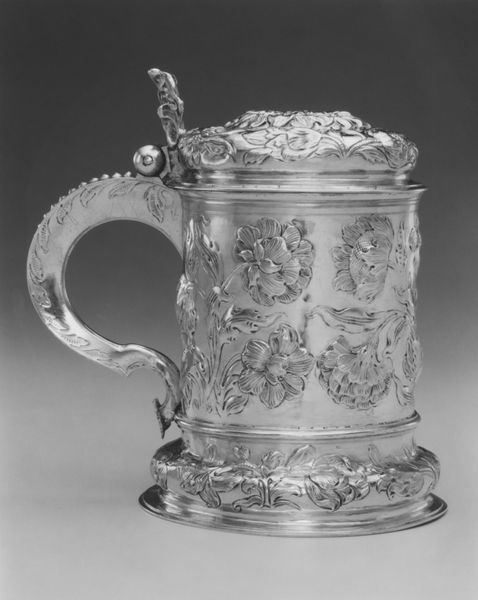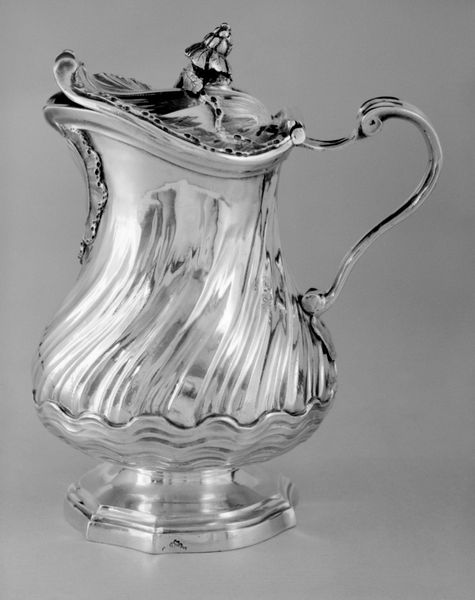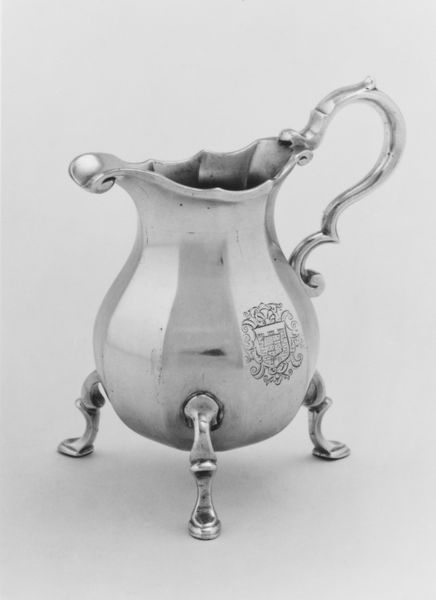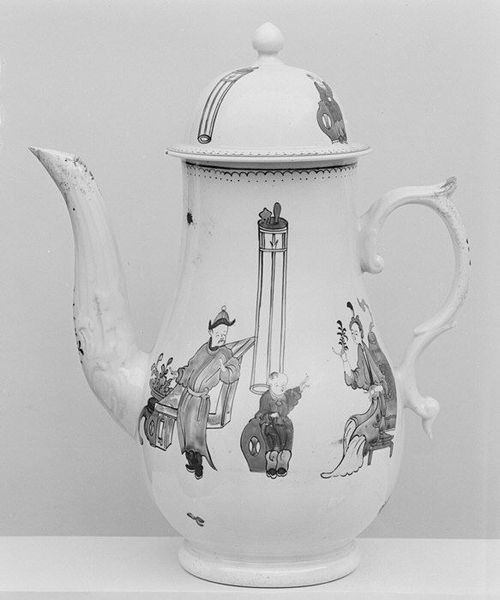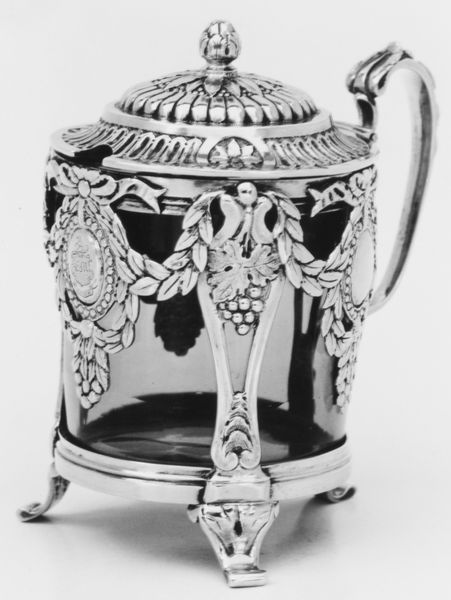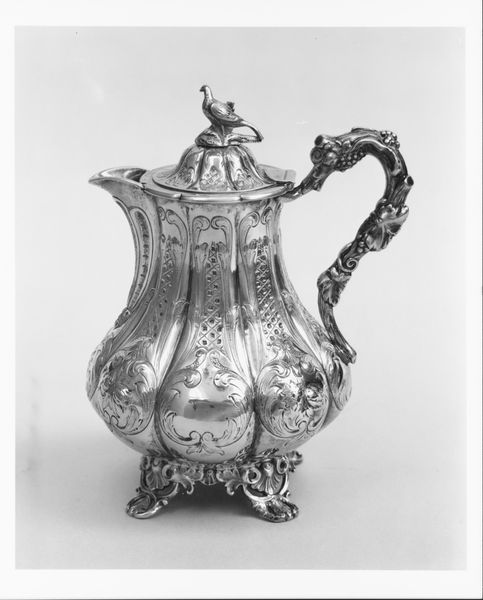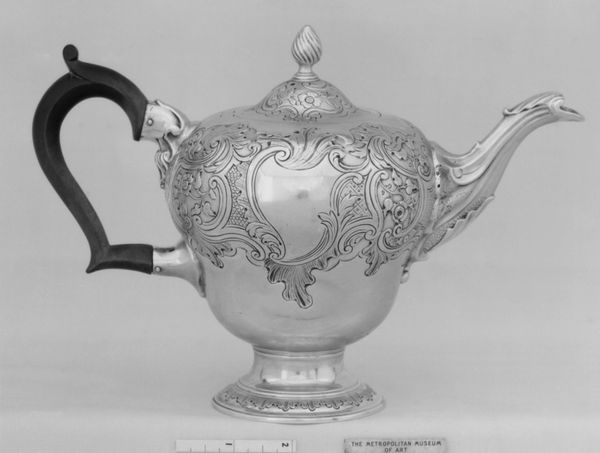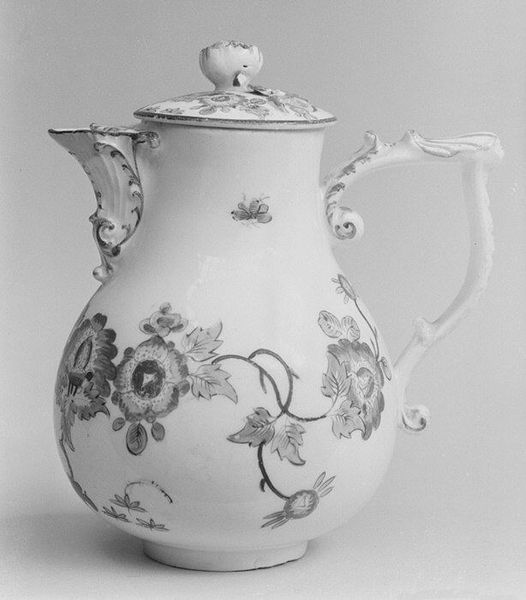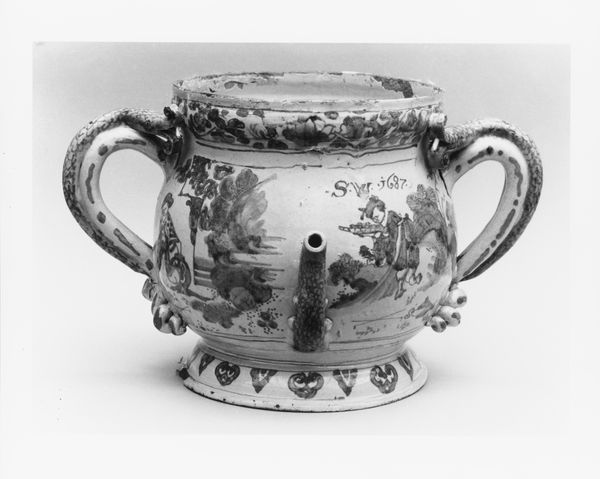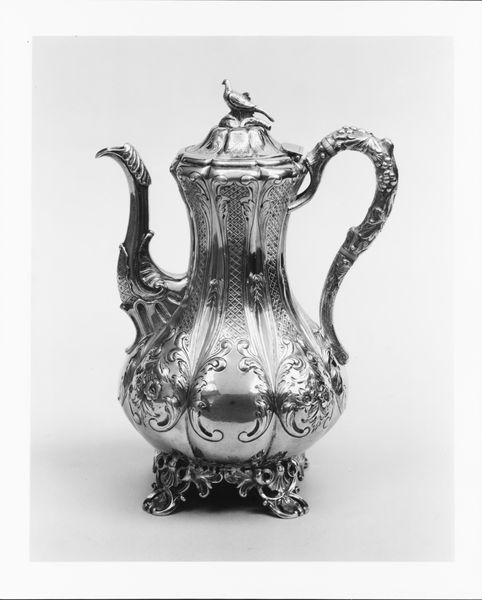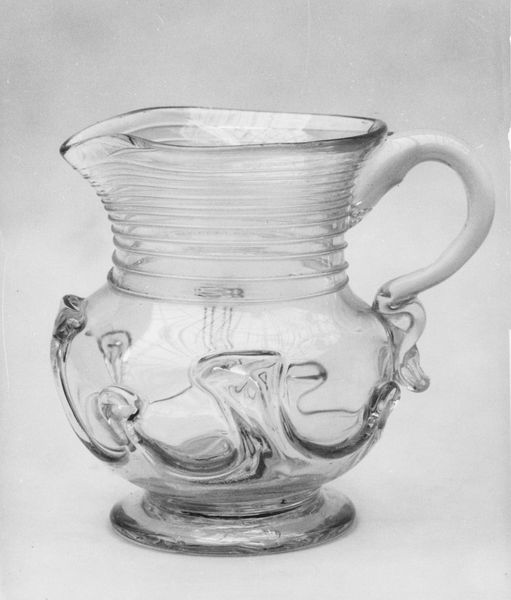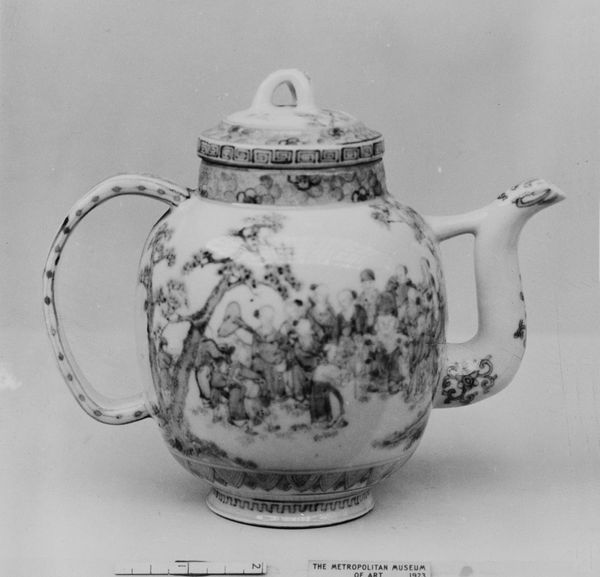
silver, metal, sculpture
#
silver
#
metal
#
sculpture
#
rococo
Dimensions: 4 1/8 × 4 5/8 in. (10.5 × 11.7 cm)
Copyright: Public Domain
Curator: Let's consider this exquisite silver cream jug crafted around 1738-1739 by Paul de Lamerie. Its currently part of the Metropolitan Museum of Art's collection. Editor: Oh, it’s so delicate! Almost painfully ornate. It's undeniably Rococo—all those curves and flourishes give it an ethereal, almost dreamlike quality. Curator: De Lamerie was a master of the Rococo style. The floral chasing, the asymmetry…it all speaks to the extravagance of the 18th century elite. He crafted pieces, like this one, for a market that equated artistry with elaborate design. Editor: The craftsmanship is incredible. But seeing this elaborate object, it’s impossible not to think about the socio-economic context. All that labor, all that expensive silver... Who benefited and who was exploited to create such an object? These delicate pieces tell a bigger story of unequal exchange. Curator: Absolutely. The culture of display during this period demanded elaborate tableware. Silver, particularly, reflected status and wealth, solidifying social hierarchies. It wasn’t just about aesthetics; it was about power and prestige. The rise of London as a center for luxury goods played a huge role too. Editor: Exactly. It's like the piece is actively performing its class. That exaggerated handle, for instance - beautiful yes, but imagine the contrast of how difficult to properly handle, and the lived reality for workers at the time, women particularly, laboring under horrendous conditions for similar fine dining experiences. Curator: And that’s precisely the conversation we need to have. This cream jug is more than just a beautiful object; it's a historical artifact that offers insights into the complex social and economic dynamics of its time. Editor: So, while appreciating the artisanship, we can challenge ourselves to critically examine the piece within the wider power structures that dictated its creation and consumption. It gives us insight to issues of production of luxury still present nowadays. Curator: Indeed. By questioning the seemingly benign object, we expose the deeper tensions embedded within the material culture of the past and, ultimately, even in our present.
Comments
No comments
Be the first to comment and join the conversation on the ultimate creative platform.
